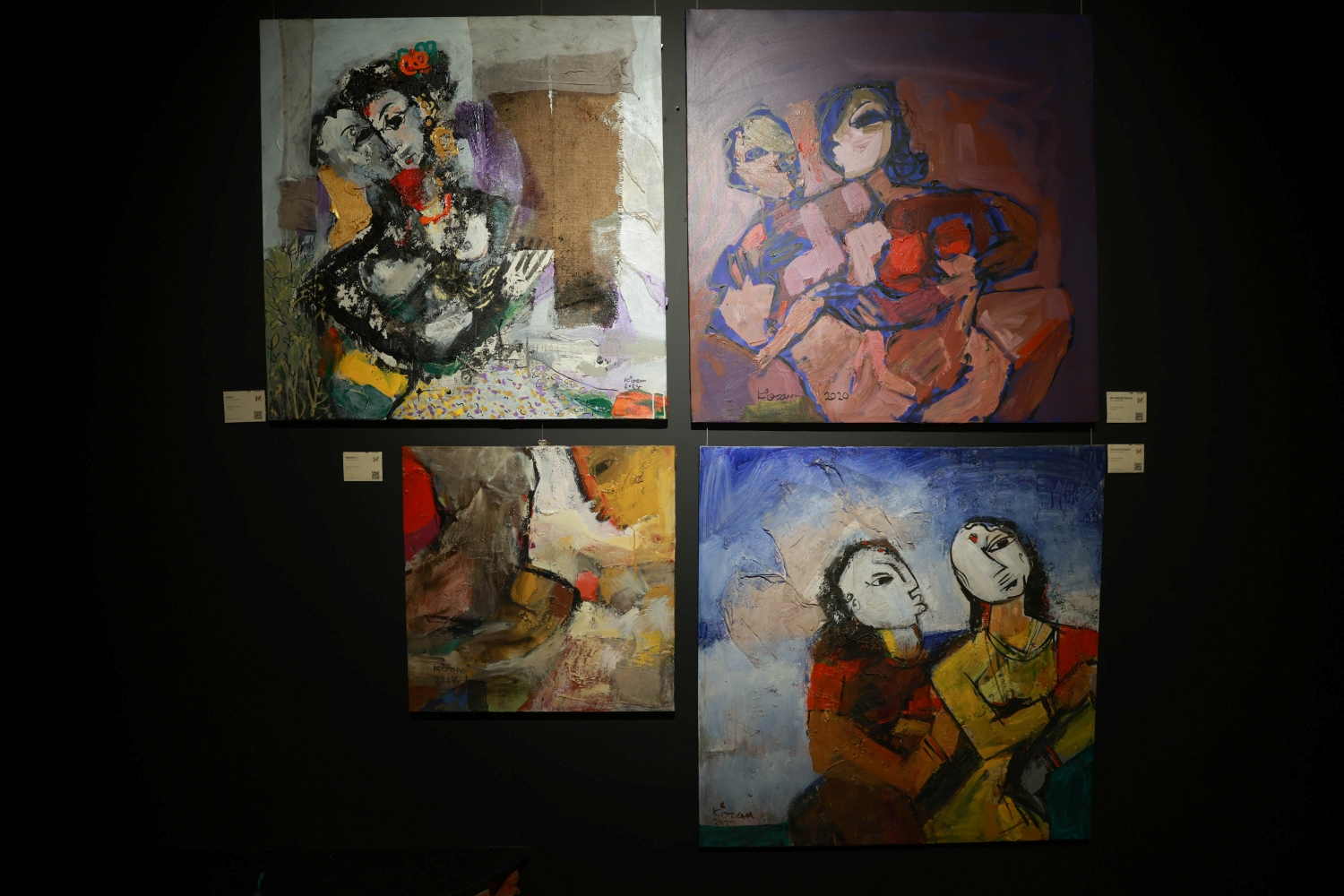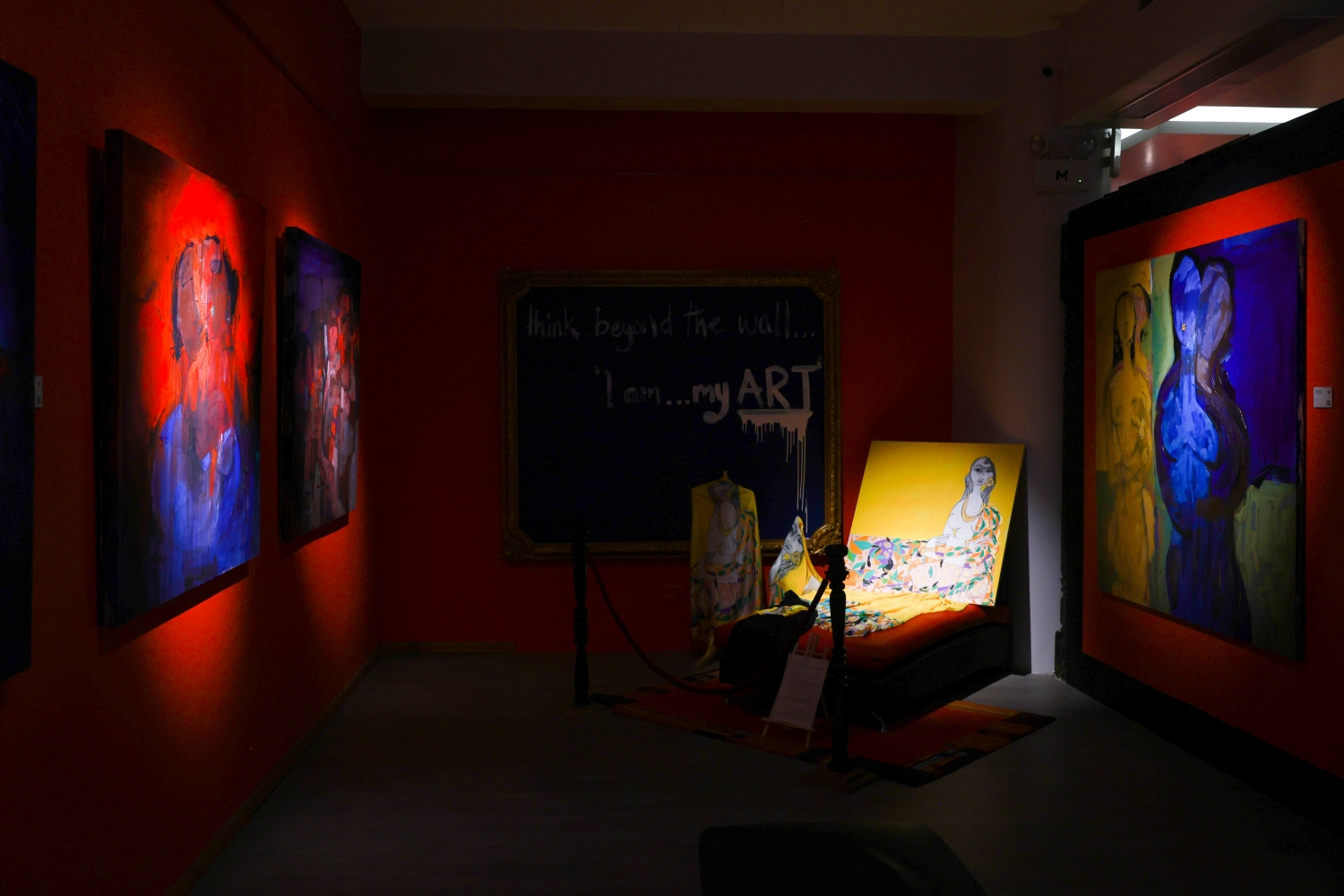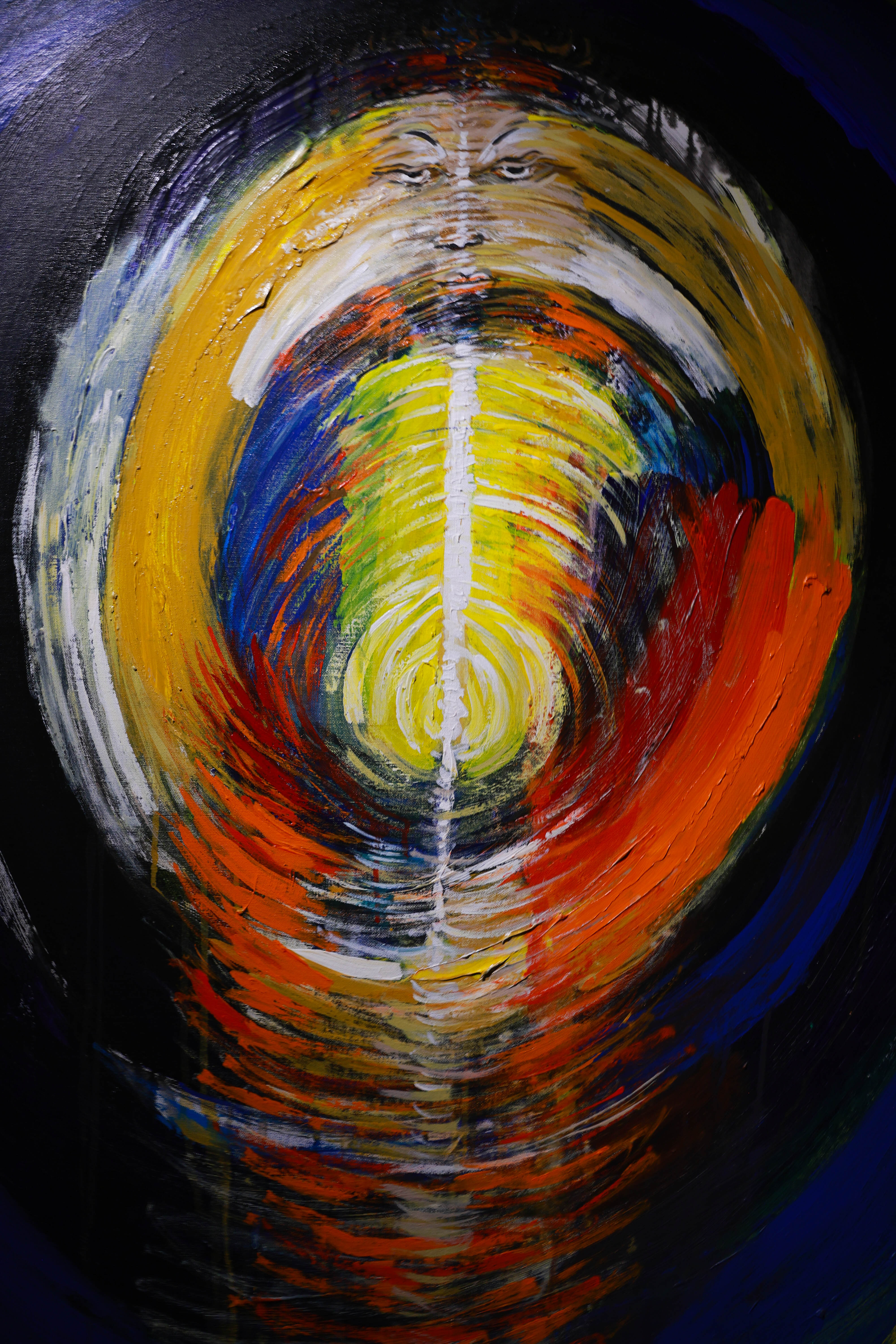Kiran Manandhar in the abstract
Exhibitions in galleries celebrate the creative explorations of one of Nepal’s best-known artistsFor someone who is considered a pioneer of abstract expressionism in Nepal, Kiran Manandhar is abstract about his craft.
At age 68, Manandhar does not see the need to explain himself, or his art. His bold and vibrant brush strokes on canvas capture movement in the temporal and spatial planes.
“I still do not understand what is abstract, there is no way to define it,” Manandhar told us while showing us around his exhibition. “Sometimes, even before I decide what I am about to create, a drop of colour hits the canvas. That’s the beginning of a dialogue.”
The ongoing exhibitions are bursting with the products of Manandhar’s lively palette and wide imaginings. The visuals are quick to grab the visitor’s attention, but the emotional depth lingers longer.
In his series, Women, what initially look like distorted, animalesque forms reveal themselves to be powerful abstractions of the essence of womanhood. It is all there: strength and vulnerability, nurturing and rebellion, solidarity and sorrow, compassion and love.

The works portray the patriarchy, and how Nepali women have become each other’s pillars. The complexities of womanhood are often best understood only by women themselves, but Manandhar seems to have the heart, mind and eyes to explore them artistically.
Several pieces from the Women series and Manandhar’s other artworks, are currently on display across Kathmandu Valley in the Museum of Nepali Art, Kathmandu Art House, Kathmandu Guest House and Patan Museum. The exhibitions honour the maestro’s five decades of artistic exploration and features not just his iconic works, but also represent a timeline of his life journey.
As a child, Manandhar used to accompany his mother to the Bishnumati River, which at the time was clean and wide. During her evening puja, he would watch the flicker of votive lamps as they floated down the dark waters.
Later, he sculpted sand figurines on the banks or rendered flowers in watercolour. Painting soon became a passion, but the young Manandhar was a rebel: rigid schools never held his interest and he preferred to roam by the river. Growing up without a job, he survived on little, searching for free meals outside mosques, and spent hours fishing and observing life unfold around him.

He ended up in Varanasi. He remembers sleeping on railway platforms, eating leftovers from garbage piles and being beaten and chased away by the police. Yet, in letters home, he wrote that he was staying in hotels and dining lavishly.
“No one rises easily in art. There’s always struggle, pain, and relentless effort,” he reflects. “Almost every artist has had to fight their way up.”
Eventually, he enrolled in Banaras Hindu University and earned both a BFA and an MFA in painting. As he came to his own, Manandhar began exploring the broader Nepali art scene and travelled to France, Germany, and Japan for art programs and residencies.

Along the way, he imbibed influences of contemporary movements in art but was mostly drawn by expressionism in a cubist style — but infusing it with influences of his Nepali roots.
Manandhar has plenty of heartfelt advice for younger artists: “One reason art hasn’t progressed as much as it could is that we often dismiss young people and their potential. Wisdom is hoarded instead of shared. But these learnings must be passed down.” Which is exactly what he seems to be doing with his multiple exhibitions around the Valley.
TUG-O-WAR
Manandhar describes his creative process as a playground with three players: colours, canvas, and himself. From that moment, the painting unfolds on its own terms. He begins to see possibilities and builds upon them, even as he is caught in a constant, dynamic tug-of-war. What emerges from this push and pull are masterpieces.
“As soon as I see colours or even think of painting, I’m completely consumed by it. My only fear is: what if one day there are no more colours? What if one day I cannot paint anymore?”
His Aatma Series takes us on a spiritual journey. The aatma (soul) transports visitors somewhere beyond the visible to unknown terrain. In Aatma IV, we are pulled into a hypnotic spiral, falling into Manandhar’s own Bermuda triangle of emotions and abstraction.

His Ganesha paintings take a more serene approach with soft curves and muted tones that emanate wisdom. In contrast, the Bhairava radiates the raw ritualistic energy of a mask dance. Both are deeply rooted in Nepali tradition, yet boldly contemporary in expression.
Then there are the Self-Reflection and Untitled works perhaps intentionally open-ended. Viewers will find human forms, birds, fleeting figures, and swirling emotions scattered across canvases and lokta paper with acrylic, oil pastels, charcoal, and mixed media.
Even by Kiran Manandhar’s standards this is as abstract as art can get.
KIRAN
Till 18 September
10am-6pm
Museum of Nepali Art
Kathmandu Art House
Kathmandu Guest House
Patan Museum




